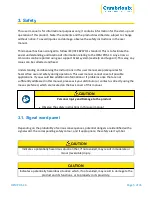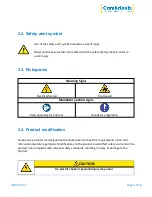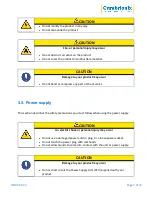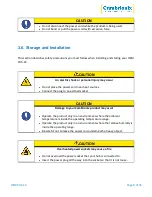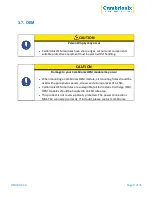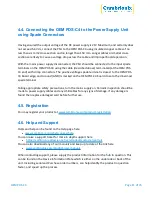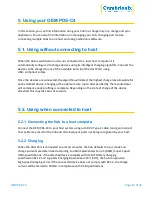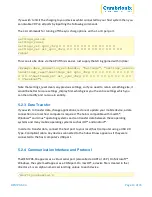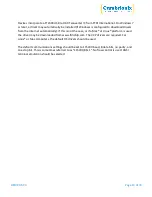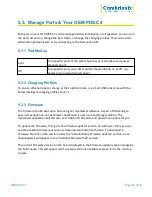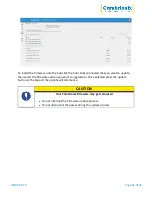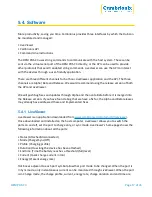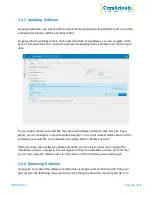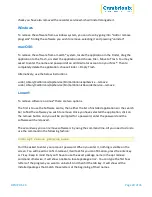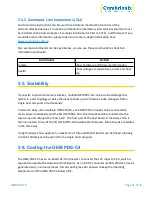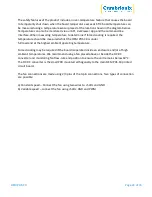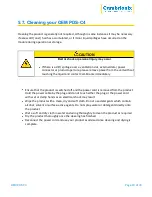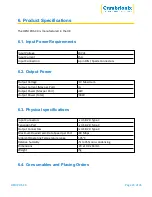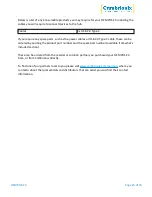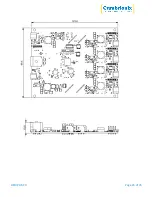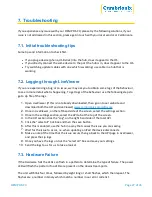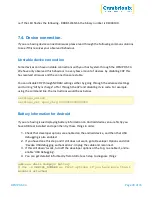
OEM PDS-C4
Page 13 of 35
If you wish to limit the charging to your devices whilst connected to your host system then you
can disable CDP on all ports by inputting the following commands.
The CLI commands for turning off the sync charg options, with a 1 or 0 per port.
settings_unlock
settings_reset
settings_set sync_chrg 0 0 0 0 0 0 0 0 0 0 0 0 0 0 0 0
settings_set alt_sync_chrg 0 0 0 0 0 0 0 0 0 0 0 0 0 0 0 0
reboot
This can also be done via the API if this is easier. Just supply that string (joined with \n) like:
cbrxapi.cbrx_connection_set(handle, "Settings", "settings_unlock-
\nsettings_reset\nsettings_set sync_chrg 0 0 0 0 0 0 0 0 0 0 0 0
0 0 0 0\nsettings_set alt_sync_chrg 0 0 0 0 0 0 0 0 0 0 0 0 0 0
0 0\nreboot")
Note that settings_reset clears any previous settings, so if you need to retain something else, it
would be better to issue settings_display first, which gives you the entire settings which you
can then modify and re-issue in entirity.
5.2.3 Data Transfer
If you wish to transfer data, change applications, restore or update your mobile device, a data
connection to a local host computer is required. The hub is compatible with macOS®,
Windows™ and Linux® operating systems and can transfer data between these operating
systems and many mobile operating systems such as iOS™ and Android™.
In order to transfer data, connect the host port to your local (host) computer using a USB 2.0
Type-C compliant cable. Any devices connected to the hub will now appear as if they were
connected to the host computer’s USB port.
5.2.4 Communication Interface and Protocol
TheOEM PDS-C4 appears as a virtual serial port (also called a UART or VCP). On Microsoft™
Windows, the system will appear as a COM port. On macOS®, a device file is created in the /
directory. S is an alpha-numeric serial string unique to each device
/dev/tty.usbserial S





